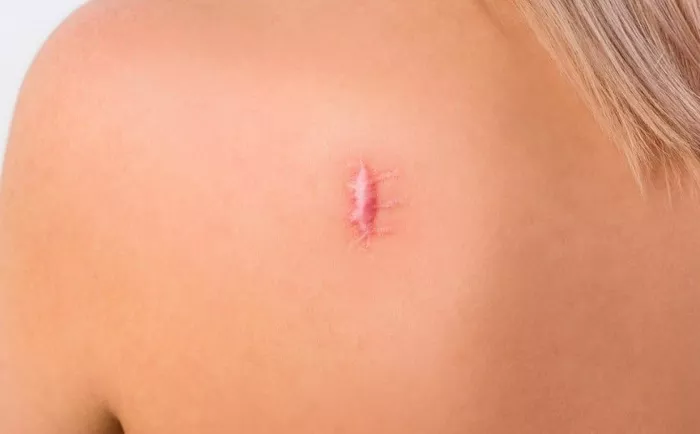Keloids are a type of scar tissue that forms at the site of a wound or injury, extending beyond the original boundaries of the injury. Unlike typical scars, keloids can be raised, itchy, and may continue to grow over time. They often pose both cosmetic and functional concerns for individuals affected by them. The question may rise: Can keloids be removed permanently? Understanding the nuances of keloids, their treatment options, and factors affecting treatment success is crucial for those seeking relief from this condition.
Understanding Keloids
Keloids result from an overproduction of collagen during the wound healing process. While the exact cause of keloid formation is not fully understood, factors such as genetics, skin tension, and inflammation play significant roles. Keloids can develop after minor injuries like ear piercings, surgical incisions, or even spontaneously without any apparent injury. Their appearance varies, ranging from pink to dark brown, and they can be smooth or irregular in texture.
Treatment Options for Keloids
Surgical Removal:
Surgical excision involves cutting out the keloid tissue. While this method can provide immediate results, the risk of recurrence is high, often leading to larger keloids than before. It’s essential to note that surgery alone may not address the underlying factors contributing to keloid formation.
Shave Excision: Shave excision involves removing the top layers of the keloid, leaving the deeper layers intact. This method is suitable for smaller keloids and may result in less scarring compared to traditional excision. However, it may not prevent recurrence in all cases.
Non-Surgical Treatments:
Non-surgical options focus on reducing inflammation, inhibiting collagen production, and promoting scar remodeling without invasive procedures.
Corticosteroid Injections: Corticosteroids are injected directly into the keloid to reduce inflammation and inhibit collagen synthesis. While effective for many individuals, multiple injections may be necessary, and results can vary.
Cryotherapy: Cryotherapy involves freezing the keloid tissue using liquid nitrogen. This method aims to destroy abnormal cells and promote healthy tissue regeneration. While generally well-tolerated, multiple sessions may be required for optimal results.
Laser Therapy: Various types of lasers, including pulse dye lasers and fractional lasers, can be used to target and break down keloid tissue. Laser therapy offers precise treatment with minimal damage to surrounding skin. However, multiple sessions may be needed, and results can vary depending on the type and severity of the keloid.
Radiation Therapy: Radiation therapy is sometimes used in combination with other treatments to prevent keloid recurrence. It works by inhibiting cell proliferation and reducing inflammation. However, radiation therapy carries risks, including skin damage and an increased risk of cancer, and is typically reserved for severe or recurrent cases.
Pressure Therapy/Silicone Gel Sheeting:
Pressure therapy involves applying pressure to the keloid using specialized garments or silicone gel sheeting. This technique helps flatten the keloid and reduce collagen production. While effective for some individuals, compliance with wearing pressure garments can be challenging, and results may take several months to become apparent.
Combination Therapy: Combining different treatment modalities, such as surgery followed by corticosteroid injections or laser therapy, can enhance outcomes and reduce the risk of recurrence. A personalized approach based on the individual’s unique characteristics and response to treatment is essential for optimal results.
Factors Affecting Treatment Success
Several factors influence the success of keloid treatment:
Keloid Characteristics:
The size, location, and type of keloid can impact treatment outcomes. Larger keloids or those located over joints or areas of high tension may be more challenging to treat.
Individual Response to Treatment:
Each individual may respond differently to treatment, and multiple modalities or combination therapies may be necessary to achieve the desired results. Patience and perseverance are crucial when undergoing keloid treatment.
Recurrence Risk:
Keloids have a high propensity for recurrence, even after successful treatment. Long-term management strategies, including regular follow-up appointments and preventive measures, are essential to minimize the risk of recurrence.
Prevention Strategies
While keloids cannot always be prevented, certain measures can help reduce the risk of their formation:
Avoiding Unnecessary Skin Trauma:
Minimizing skin trauma, such as avoiding unnecessary piercings or tattoos, can reduce the risk of keloid formation.
Protecting Wounds During Healing:
Proper wound care, including keeping wounds clean and covered, can promote optimal healing and reduce the likelihood of keloid formation.
Consultation with a Specialist
Seeking advice from a dermatologist or plastic surgeon specializing in keloid treatment is critical for developing a personalized treatment plan. A thorough evaluation of the keloid’s characteristics, medical history, and individual preferences will guide the selection of the most appropriate treatment options.
In conclusion, while keloids can be challenging to treat, a variety of surgical and non-surgical options are available to help manage this condition. By understanding the treatment options, factors influencing treatment success, and preventive measures, individuals affected by keloids can make informed decisions about their care and pursue effective treatment strategies tailored to their unique needs.
[inline_related_posts title=”You Might Be Interested In” title_align=”left” style=”list” number=”6″ align=”none” ids=”6943,6940,6871″ by=”categories” orderby=”rand” order=”DESC” hide_thumb=”no” thumb_right=”no” views=”no” date=”yes” grid_columns=”2″ post_type=”” tax=””]

































